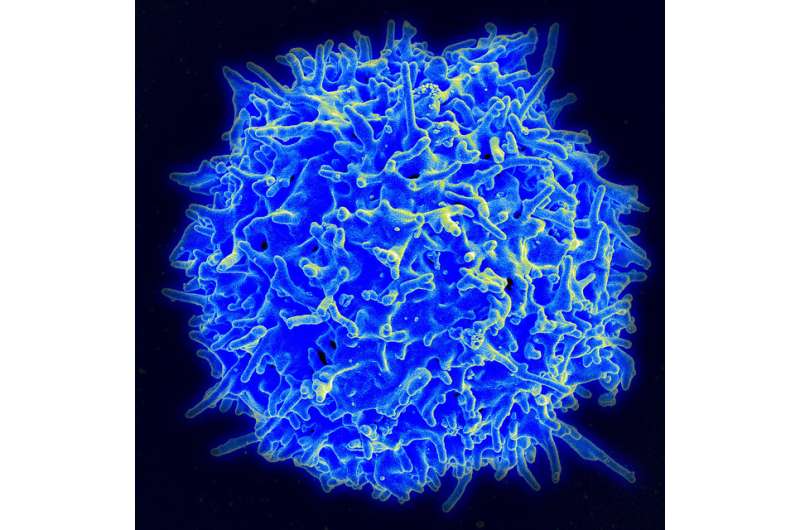May 29, 2018 report
Two teams independently come up with a way to avert CRS in CAR T-cell therapies

Two teams of researchers, one working in the U.S., the other in Italy, have come up with new ways to avert cytokine release syndrome (CRS) in leukemia patients who undergo CAR T-cell therapies. In the first, the researchers working at the Sloan Kettering Cancer Center in New York developed a mouse model to replicate the conditions under which CRS develops. They were able to isolate a key molecule involved in the syndrome and then found a drug that blocks it. The second team developed a different mouse model and found the same molecule involved. But instead of blocking it, they genetically modified the T-cells to prevent CRS from arising in the first place. Both have published their results in the journal Nature Medicine. Cliona Rooney and Tim Sauer with Baylor College offer a News & Views piece on the work done by the two teams in the same journal issue.
To treat leukemia patients, researchers have developed a technique whereby T cells from the patient are modified with chimeric antigen receptors (CAR) and then injected back into the patient—a method known as adoptive cell transfer. The overall procedure is called CAR T-cell therapy and it has proven to be very effective in treating leukemia. But there is one major problem with its use—approximately one-third of patients develop CRS, which requires extremely specialized treatment to prevent death. Some patients also develop neurotoxicity. These complications have limited the use of the technique to treat patients. In these two new efforts, the researchers have found new ways of overcoming these problems.
In the first study, after developing their mouse model, the researchers identified a molecule known as IL-1 as a key factor leading to CRS—prior research has shown it is involved in inflammation. Further research led to the discovery that a drug called anakinra could be used to inhibit the molecule. In the second study, the researchers identified the same molecule and added an inhibitor gene into the CAR T-cells to prevent CRS from arising.
Both teams note that they do not know if their techniques for preventing or treating CRS will work in humans, but suggest human trials are required to find out.
More information: Theodoros Giavridis et al. CAR T cell–induced cytokine release syndrome is mediated by macrophages and abated by IL-1 blockade, Nature Medicine (2018). DOI: 10.1038/s41591-018-0041-7
Margherita Norelli et al. Monocyte-derived IL-1 and IL-6 are differentially required for cytokine-release syndrome and neurotoxicity due to CAR T cells, Nature Medicine (2018). DOI: 10.1038/s41591-018-0036-4
© 2018 Medical Xpress















